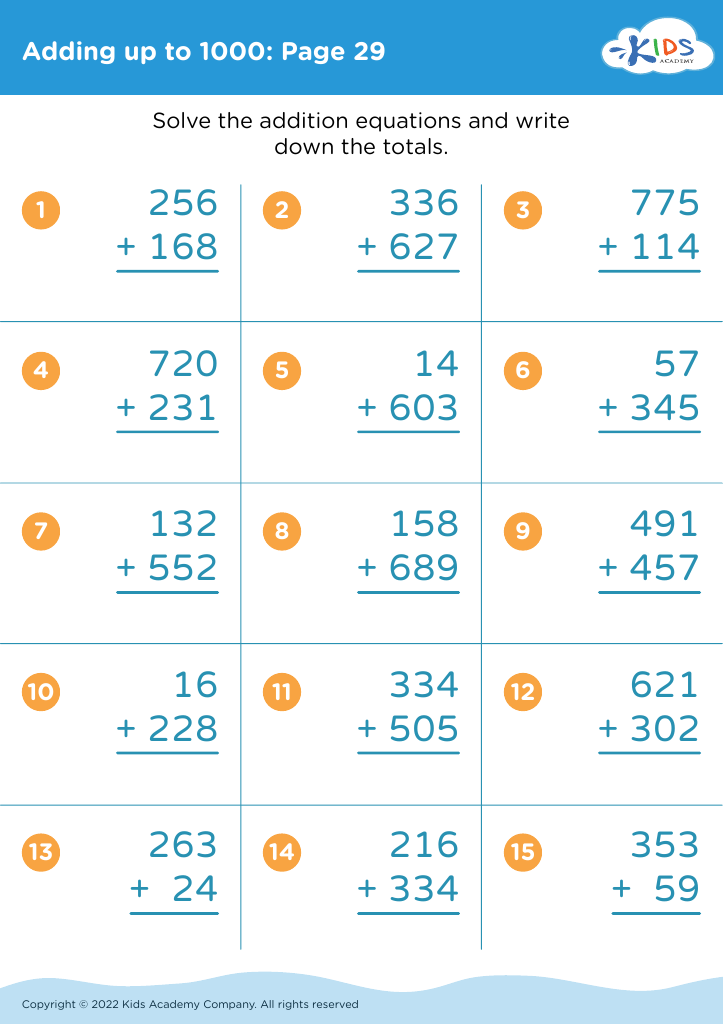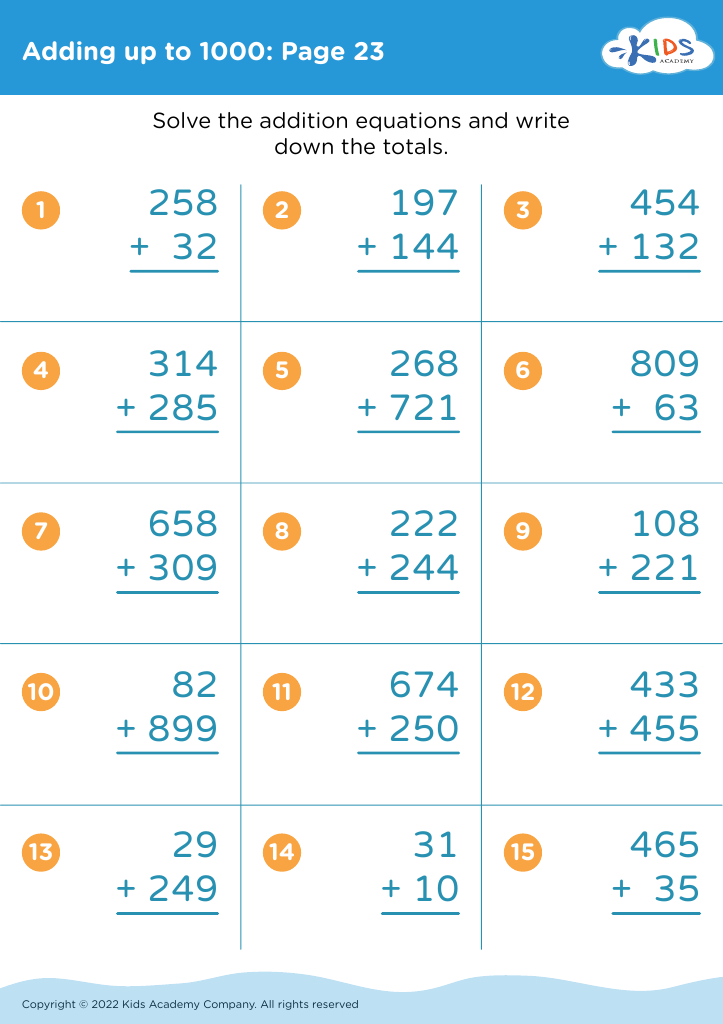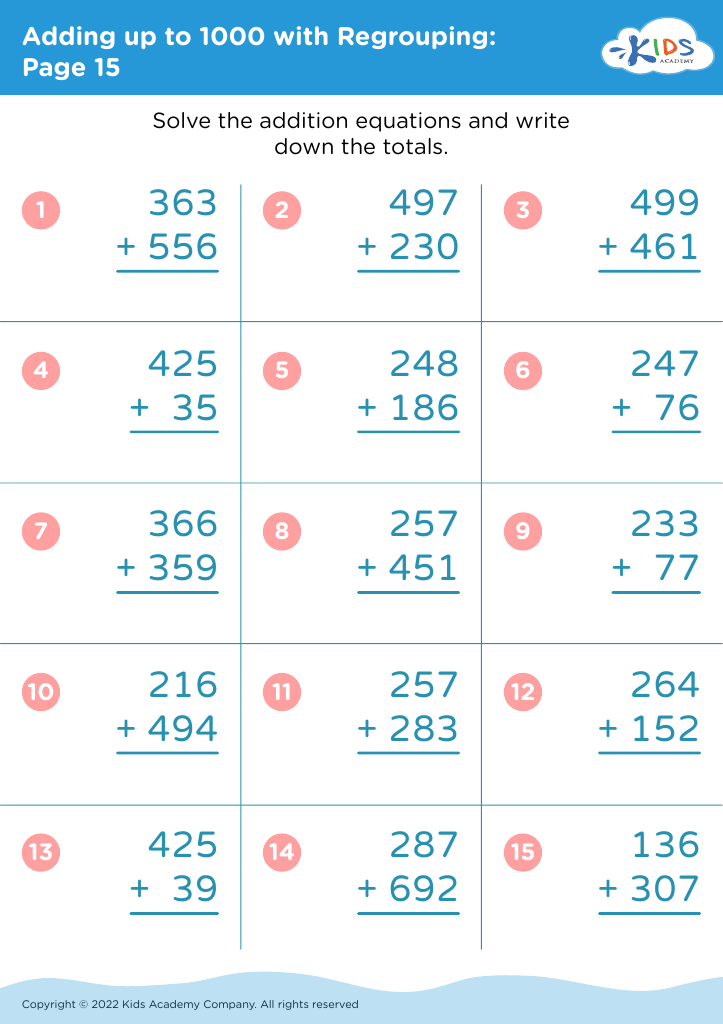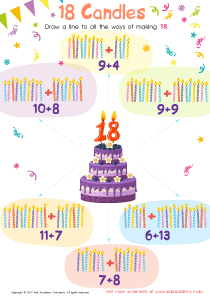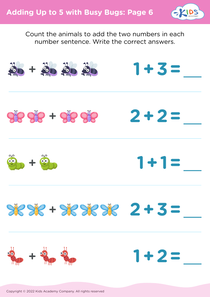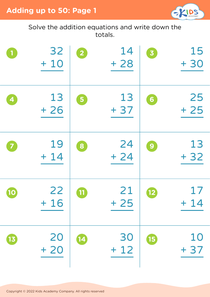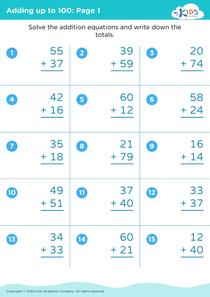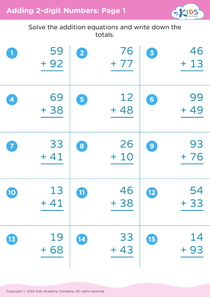Reading analog clocks Adding up to 1000 Worksheets for Ages 7-8
3 filtered results
-
From - To
Improve your child's understanding of time with our "Reading Analog Clocks Adding Up to 1000 Worksheets" designed for ages 7-8. These engaging worksheets combine essential math skills, such as addition and number recognition, with the practical ability to read and interpret analog clocks. Carefully crafted activities encourage young learners to not only tell time accurately but also practice addition with numbers up to 1000. Perfect for classroom use or at-home learning, these worksheets provide a fun and interactive way to enhance both math and time-telling skills. Equip your child for success, blending critical thinking with everyday mathematics.
Parents and teachers should care about teaching children to read analog clocks for several important reasons. Firstly, understanding analog clocks fosters essential life skills. While many digital devices are prevalent, analog clocks remain a part of everyday life in various settings, such as homes, schools, and public spaces. Mastering this skill helps children read time effectively and develop independence.
Moreover, learning to read analog clocks aids in enhancing a child’s cognitive abilities. It encourages critical thinking and visual-spatial skills, as children must interpret different positions of the hour and minute hands relative to the clock face. The process of calculating time intervals—such as figuring out how much time is left before a specific activity—also introduces basic mathematical concepts.
Additionally, these skills provide an excellent opportunity for parents and teachers to engage in interactive learning experiences. Using real-life situations (like scheduling activities or determining the time for a planned event) can make the learning process enjoyable and memorable.
Ultimately, teaching children how to read analog clocks not only equips them with practical skills but also encourages their intellectual growth and builds confidence, making it an invaluable aspect of their education.
